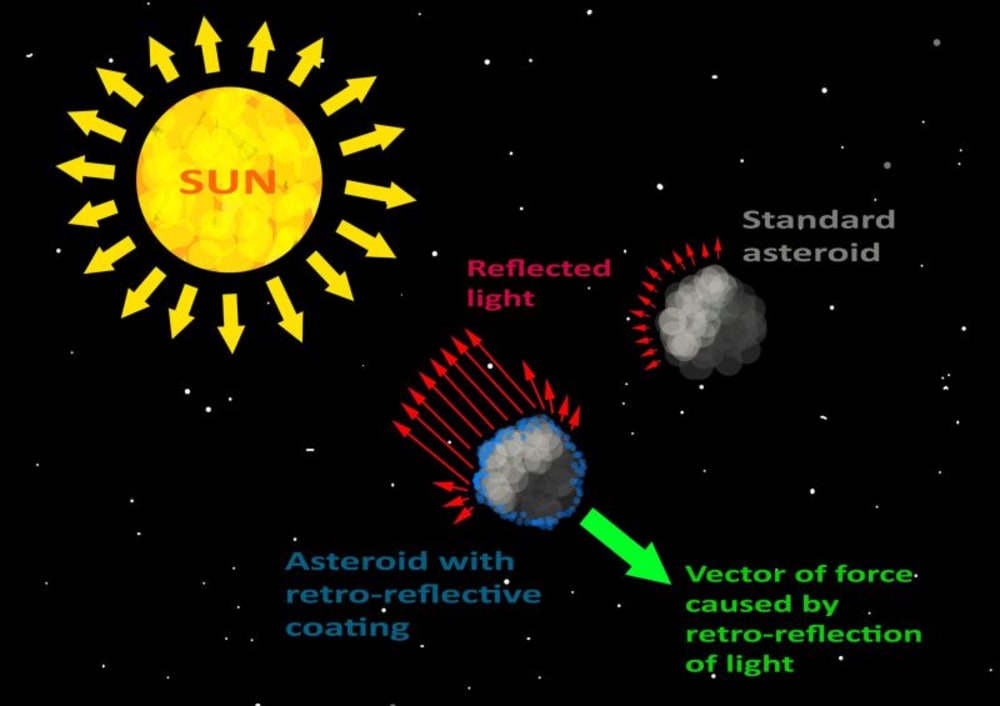Time to time the Earth gets hit by an asteroid. This can be potentially very serious threat for a continent or entire humanity. Since 90's there is ongoing observation for to spot potentially dangerous asteroids. So far there are more than 5000 objects with known trajectories. Some of them have potential for collision in future. When we know about such issue in advance we can think about some kind of defense. Considered approaches includes direct impact on the object with hi speed manmade object (like Deep impact project), slow action with ion engine, nuclear strike and some others.
My approach is based on idea to bring the solar wind into the game. This tiny force already has effect on every object in solar system. However, if we will cover surface of an object with reflexive materials, we can increase this force significantly, but less then twice. The smart idea is to use not just reflective material, but involve retro reflective material. Since the sun rays will be reflected preferably back to the Sun, the effect will create vector of force permanently pushing the object out of Sun, no matter on rotation of the object.
The advantage over other approaches is the passive effect, where since one applied it will induce tiny but longtime acting force, which can work for decades and centuries.
It is considered to use array of corner retro reflectors with square side, made out of tin aluminum foil. This concept has two main advantages: due its specific structure it has the same function from both sides and the plane has great stiffness because the single square sides create 3D structure. This is importance for reduction of thickness and therefore mass of regarded material per square unit. The aluminum has low density and when not exposed to oxygen, it will remain highly reflective and it has can withstand UV radiation in space.
An elegant solution for application of the material will be based on kind of retro reflective "snowflakes" which will be spread over the surface from orbit. The solar wind should be accounted for to avoid case when the flakes will blow out into the space.
Case study: Object 1999 RQ36
This object has series of eight potential Earth impacts between 2169 and 2199. The cumulative probability of impact almost 0.07% for all eight encounters. The size has been estimated as 560 meters with mass 68 billions tons.
It will be objective of OSIRIS-Rex mission between 2016 and 2023. This mission will also improve our estimation of potential collision.
In case the surface will be covered with retro reflective material it can be expected the gain in solar wind pressure will give force of 0,4 Newton. This force can move this object for two diameters of Earth in 100 years. Not too much however it can be sufficient. For this it will be necessary to get to the object about 100 tons of retro reflective “snowflakes”.
Like this entry?
-
About the Entrant
- Name:Daniel Kopkane
- Type of entry:individual
- Patent status:none

